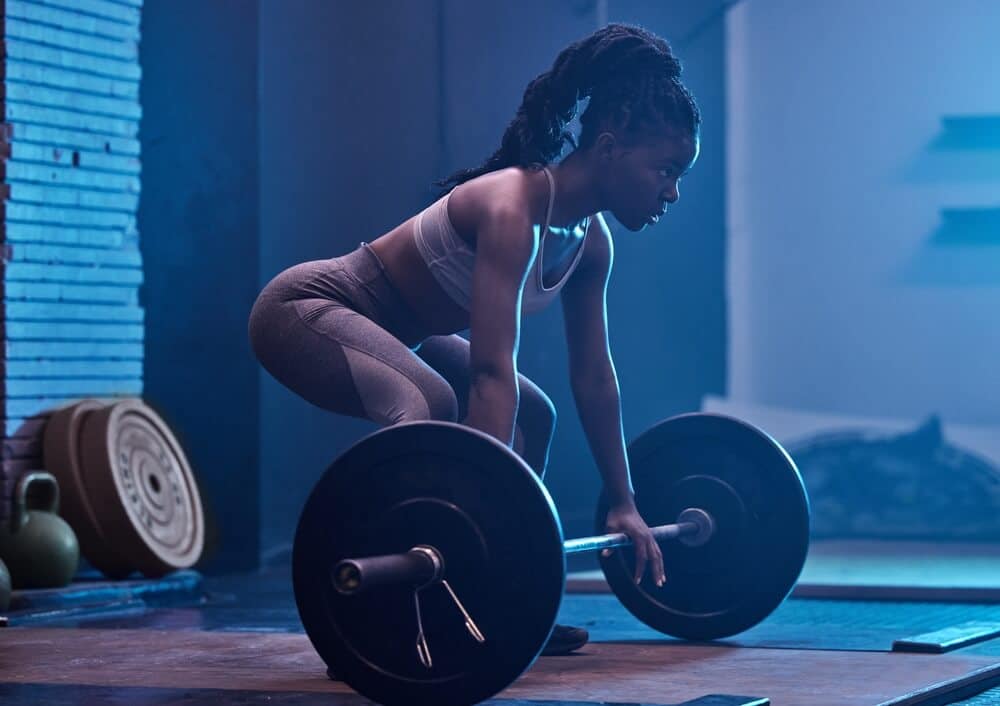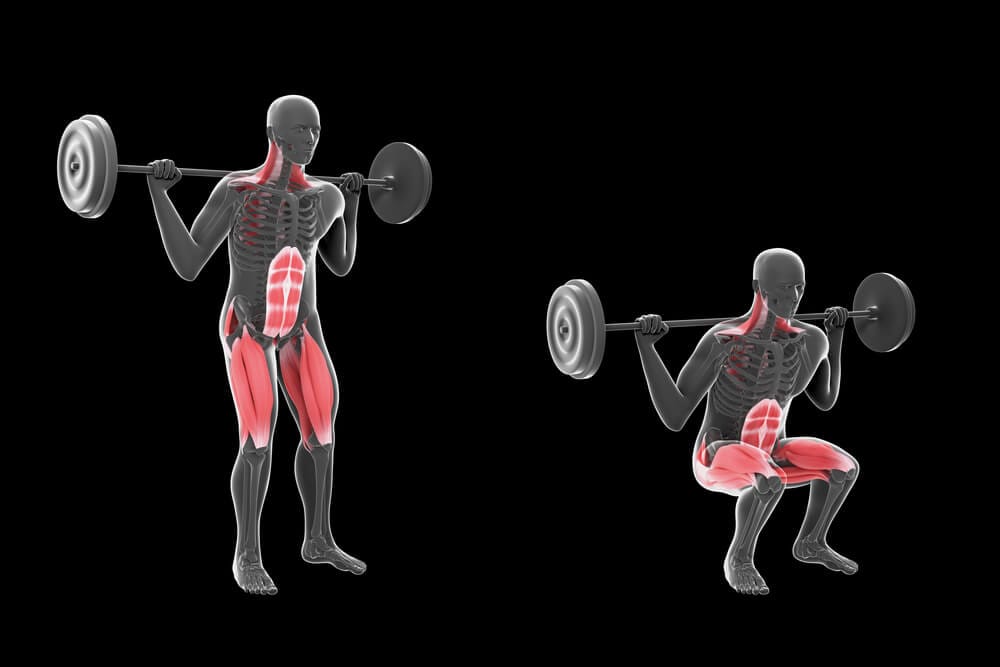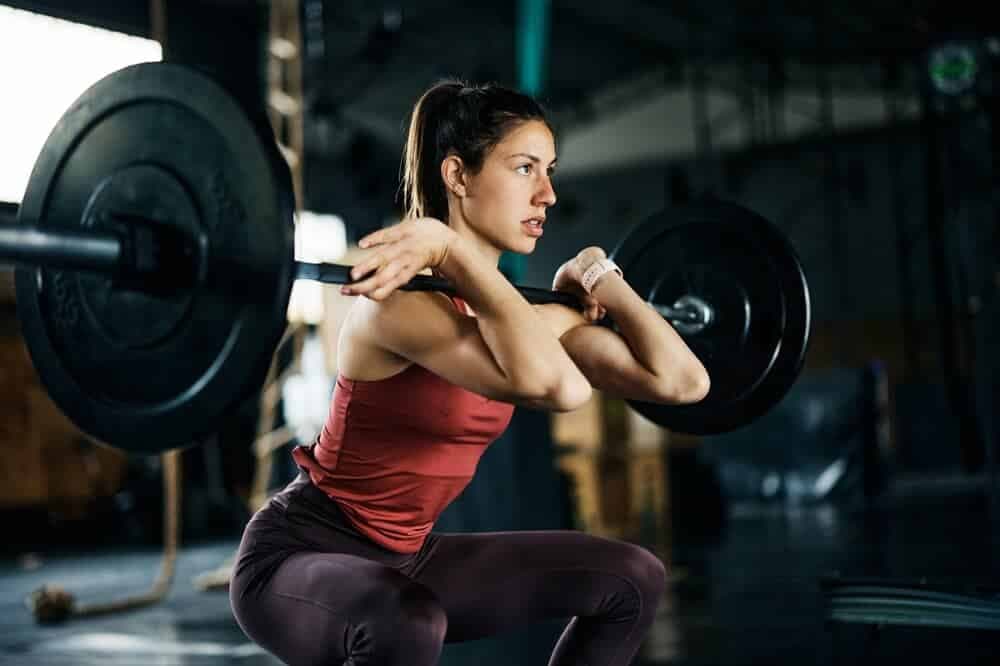Squats and Deadlifts Same Day: Risks, Muscles Worked, Considerations
Learn about doing squats and deadlifts on the same day. Find out whether same-day squats and deadlifts are dangerous or beneficial for muscle growth.
If you’re a beginner to training your legs in the gym, planning your workout splits can feel confusing. When you think about heavier lifts, you probably envision your squats and deadlifts.
But do you have a plan in mind for what the most effective squat and deadlift schedule may be?
A squat and deadlift same-day session can feel compelling. It’s an easy way to get your heavy lifts checked off your to-do list for the week.
But is training squats and deadlifts on the same day dangerous or beneficial?
This article will go through the pros and cons of same-day squats and deadlifts.
Is it safe to do squats and deadlifts on the same day?

If you’re asking the question, “can you do squats and deadlifts same day?” in terms of safety, the answer is generally yes.
Most people, in fact, like to break their training up by muscle group.
Even if you’re a gym beginner, you’ve probably heard of the dreaded “leg day.”
Here, you train your hamstrings, glutes, quads, and calves all during the same workout session. To hit these leg muscles, squats and deadlifts are some of the most effective exercises you can do.
Doing squats and deadlifts the same day isn’t unsafe for most people as long as you understand your training goals and have a good sense of how the weights you’re working with will impact your body.
If you want to use a lighter weight or do squats and deadlifts with resistance bands (people typically go lighter than with barbells here), you can absolutely perform these two lifts on the same day.
Risks and benefits of squats and deadlifts on the same day
Benefits of squats and deadlifts, same-day
- Strength and Hypertrophy: These two key power moves are fundamental building blocks of your body’s overall power and strength. Athletes like bodybuilders and powerlifters— known for impressive aesthetic workout techniques as well as insane strength— use these moves to get buff. Both squats and deadlifts are phenomenal exercises when it comes to developing your strength base.
- Athletic Performance: If you’re involved in just about any sport, these moves are perfect for cross-training to achieve better performance. Your squat and your deadlift are both key tells of your overall strength. Not only do they apply to weightlifting, some degree of squatting motion is used in body stance and how you position yourself in sports like baseball, basketball, gymnastics, and sprinting. Working on these exercises helps you prepare to compete at the top level.
Risks of squats and deadlifts, same-day
- Injury Risk: Back-to-back heavy lifts can come with the risk of burnout or injury. For most people squats and deadlifts are the two heaviest lifts you’ll perform in the gym. Lining these exercises up sequentially can be too taxing on your muscles, especially if you’re going for one-rep maxes (aka 1RM, meaning the most you can lift for a single rep) or five-rep maxes, etc. with either of these lifts.
- Sacrificing the rest of your workout: You’ll probably be completely gassed if you do your squats and deadlifts back to back. If you’d planned other glute and hamstring workouts or leg workout machine exercises, for example, good luck! Your legs most likely won’t have enough life left in them to make these supplementary lifts effective or safe.
- Exhaustion: Pushing these exercises back to back during your leg day may give you the urge for a nap after your workout. Overexertion in the gym can cause you to feel unnecessarily fatigued. This can throw off the course of your day and distract you from the things you need to get done.
Squats and deadlifts— muscles worked

Glutes
The glutes help you stand, sit, extend your hips and drive your body forward. They also stabilize your pelvis.
Hamstrings
The hamstrings help you bend your knees and bring your legs back behind your body.
Quads
The quads help you extend your knees and flex your hips.
Hamstrings focus on your glutes and hamstrings, while squats include work from your quads as well.
The calves stabilize these exercises somewhat and your abdominal muscles also keep you stable during these moves. However, they are both considered secondary muscles in these exercises.

Should I do squats or deadlifts first?
If you are going heavy with your squats and deadlifts, do squats first.
Heavy squats are reliant on your lower back to help you drive your body up and keep your weight adjusted in place.
Deadlifting will tire out the muscles of your lower back and your core stabilizers before you squat if you plan to do a heavier lift.
This makes performing a heavy squat afterward less safe. Unless you’re working with a spotter who knows how to spot a squat, you may find that you feel lower back pain when squatting if you’ve deadlifted first.
There are exceptions to this rule.
If you want to perform a heavier deadlift and lightweight squats, start with the deadlift.
Typically you should work on your most challenging lifts at the gym while you have the most energy. That means they should be first in your lineup.
Otherwise, you may burn yourself out and feel too exhausted to go as heavy with your secondary lifts.
Recovery consideration of squats and deadlifts, same-day
Big weights mean big recovery.
If you’re lifting maximal weights during your squats and deadlifts, you’ll need to take more time off between sets or between exercises to recover.
Research on the length of the rest interval between resistance exercise sets indicates that if you are using a load below 90% of your 1RM, a 3-5 minute rest allows you to recover while maintaining exercise intensity through the rest of your workout, while 1-2 minutes is sufficient if you are simply making attempts to hit your 1RM.
These longer rest periods, compared to hypertrophy rests (muscle growth) training which typically last 30-60 seconds, may tack unwanted time onto your workouts.
If time constraints are an issue, consider working on your heavy squats and deadlifts on different days.
Muscular and neural adaptations with deadlifts and squats
Not only are squats and deadlifts a test of strength.
These exercises are highly taxing on your central nervous system (CNS). Research on biomechanical constraints and improving the deadlift suggest that overtraining heavy deadlifts may lead to too much neural fatigue for the move to remain effective for strength adaptations.
Well-designed exercise programs are essential for your body to help improve the synchronicity and firing capacity of motor neurons for more efficient muscle fiber activation in your lifts.
Squat, deadlift, and track on the same day. The Flex App progresses as you do with plate tracking capabilities and auto progression.
Related articles


Get fit with Flex
Build muscle & lose weight fast for free.
Available on iPhone + Apple Watch





